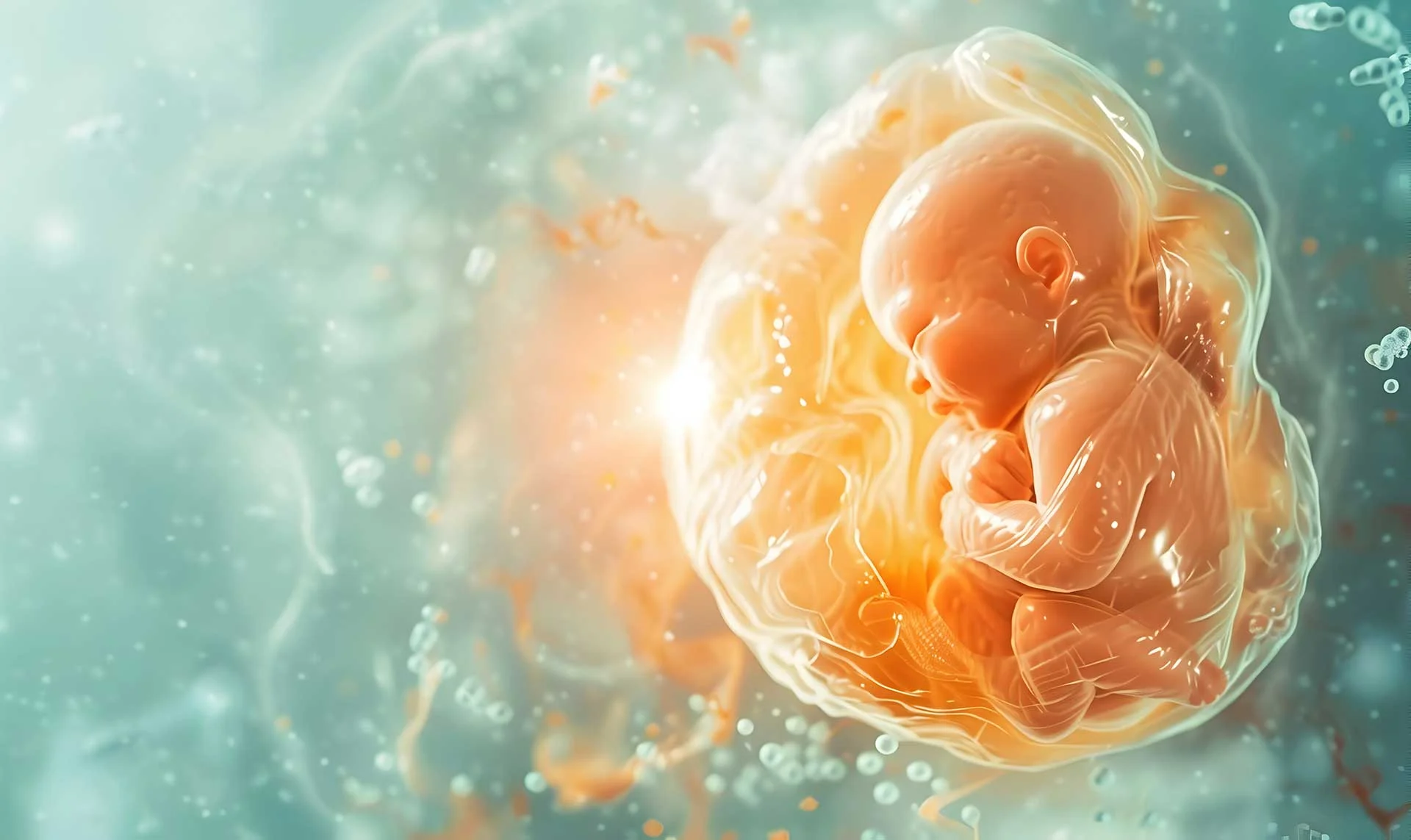
Renal failure is defined as the inability of the kidneys to adequately perform their essential physiological functions-namely, the removal of toxic waste products from the blood, regulation of fluid and electrolyte balance, and excretion of excess fluid through urine. This condition is typically characterized by a gradual and progressive loss of kidney function rather than a sudden onset. Depending on the underlying etiological (causes and variables of diseases or pathologies) factors, kidney function progressively deteriorates and, in advanced stages, may result in complete renal shutdown.
Clinically, renal failure may present with systemic symptoms such as reduced urine output (oliguria), peripheral edema (fluid accumulation and swelling particularly in the feet and ankles), shortness of breath, fatigue, nausea and vomiting, and-at more advanced stages-altered mental status. These manifestations are direct consequences of accumulated uremic toxins and impaired fluid-electrolyte regulation within the body.
Renal failure is classified as either acute or chronic, depending on its etiology and duration. Chronic renal failure, in particular, is recognized as a major global public health concern due to its increasing prevalence (frequency of occurrence) worldwide.
- Worldwide:
As of 2021, approximately 673.7 million individuals globally were diagnosed with chronic kidney disease (CKD). The age-standardized prevalence rate for that year was reported as 8.006 per 100.000 population (8.0%). A comprehensive meta-analysis estimated the global prevalence of CKD across all stages to be 13.4%, while the prevalence for stages 3 to 5 alone was 10.6%. Although no significant changes in age-standardized rates were observed between 1990 and 2021, the total number of CKD cases increased by 92% during this period. This dramatic rise is primarily attributed to global population growth and the increasing proportion of elderly individuals.
- In Turkey (CREDIT Study):
In Turkey, the CREDIT study analyzed data from approximately 10,748 adult individuals. Within this cohort, the prevalence of CKD—defined as an estimated glomerular filtration rate (eGFR) of less than 60 mL/min—was found to be 5.2%. The rate of microalbuminuria positivity was 10.2%, while macroalbuminuria was present in 2.0% of participants. The overall prevalence of CKD across all stages was calculated at 15.7%, with a gender-specific prevalence of 18.4% in women and 12.8% in men, indicating a higher disease burden among female individuals.
Renal failure is diagnosed based on a reduction in glomerular filtration rate (GFR) and/or the detection of kidney damage through laboratory tests or imaging studies. The diagnostic process involves not only the evaluation of renal function but also the assessment of structural integrity and early indicators of renal injury.
- eGFR and Serum creatinine
The estimated glomerular filtration rate (eGFR), calculated based on serum creatinine levels, is a fundamental indicator in assessing kidney function. The CKD-EPI and MDRD equations are the most commonly used formulas. An eGFR value below 60 mL/min/1.73 m² suggests chronic kidney disease.
- BUN (Blood Urea Nitrogen)
BUN provides information on the kidney’s ability to eliminate nitrogenous waste products. However, it is not diagnostic on its own, as it can be influenced by external factors such as dietary protein intake and hydration status.
- Urinalysis
An albumin-to-creatinine ratio (ACR) of 30 mg/g or higher in the urine indicates microalbuminuria, which reflects early-stage kidney damage. Urine microscopy can also reveal structures such as casts that are suggestive of glomerular injury.
- Imaging techniques
Renal ultrasonography is the first-line imaging modality for structural evaluation of the kidneys. It is used to assess kidney size, cortical thickness, and abnormalities such as cysts. For more detailed assessment, computed tomography (CT) or magnetic resonance imaging (MRI) may be employed.
- Novel biomarkers
Biomarkers such as neutrophil gelatinase-associated lipocalin (NGAL), kidney injury molecule-1 (KIM-1), and interleukin-18 (IL-18) rise earlier than serum creatinine in cases of acute kidney injury (AKI), thereby enhancing diagnostic sensitivity.
- Renal biopsy
Although renal biopsy is an invasive procedure, it provides significant diagnostic value. It is particularly indicated in conditions such as glomerulonephritis or when systemic diseases are suspected. Histopathological analysis of kidney tissue offers detailed information about the type, stage, and progression of the disease.
Acute Kidney Injury (AKI) refers to a sudden decline in kidney function, typically characterized by an increase in serum creatinine levels (a marker of the kidneys’ filtration capacity) and a reduction in urine output (oliguria), occurring within a time frame of up to 7 days.
Diagnosis is most commonly based on the KDIGO 2012 criteria, which include:
- An increase in serum creatinine by ≥ 0,3 mg/dL (26.5 µmol/L) within 48 hours, or
- An increase in serum creatinine to ≥ 1.5 times the baseline within the prior 7 days, or
- Urine output <0.5 mL/kg/hour for more than 6 hours
AKI represents a subset of acute kidney dysfunctions classified under Acute Kidney Diseases and Disorders (AKD), which refers to structural and/or functional kidney abnormalities lasting between 7 and 90 days. Renal dysfunction persisting beyond 90 days is classified as Chronic Kidney Disease (CKD).
Chronic kidney disease (CKD) is a clinical condition that develops as a result of significant changes in kidney function and/or structure, and follows an irreversible, slow, and progressive course.
In adults, a diagnosis of CKD is made when the glomerular filtration rate (GFR) remains below 60 mL/min/1,73 m² for at least three months, or when there is structural kidney damage even if the GFR is above 60 mL/min/1,73 m².
Indicators of kidney damage include:
Albuminuria, structural abnormalities detected in renal imaging, hematuria or leukocyturia, persistent electrolyte imbalances, histological (in the structure of tissues) changes observed in kidney biopsy, and a history of kidney transplantation.
Albuminuria is defined as the presence of more than 30 mg of albumin in a 24-hour urine sample, or more than 30 mg/g of albumin corrected for urine creatinine in a spot urine sample.
The main causes of CKD include:
Diabetes, hypertension, chronic glomerulonephritis, chronic pyelonephritis, long-term use of anti-inflammatory drugs, autoimmune diseases, polycystic kidney disease, Alport syndrome, congenital anomalies, and prolonged episodes of acute kidney failure.
*Chronic kidney disease is a common condition that affects 1 out of every 10 people worldwide.
*CKD has risen to become the 10th leading cause of death globally.
In acute kidney failure (AKF), the main approach is early diagnosis and correction of the underlying cause.
Fluid and Hemodynamic Management
- The volume status should be assessed, balancing the risk of fluid overload and hypoperfusion.
- Isotonic crystalloids (e.g., normal saline, Ringer’s lactate) are generally preferred.
- Colloid solutions (e.g., albumin) are generally not recommended.
- In cases of hypotension, vasopressors (vasoconstrictor drugs) such as norepinephrine may be used to support renal perfusion (renal blood flow).
Correction of Electrolyte and Acid–Base Imbalance
- Hyperkalemia (increased blood potassium levels) is treated with potassium-binding agents or, if necessary, dialysis.
- Metabolic acidosis is corrected with sodium bicarbonate, especially if dialysis is delayed.
- In case of hypocalcemia (decreased blood calcium levels), calcium gluconate can be administered intravenously ((i.v.) into a vein).
RRT modalities include:
- Intermittent Hemodialysis (IHD)
- Continuous Renal Replacement Therapy (CRRT): Provides more gentle and balanced fluid/electrolyte removal in critically ill patients.
Avoiding nephrotoxic agents (those that cause kidney damage) and reviewing medications
- Nephrotoxic medications, such as nonsteroidal anti-inflammatory drugs (NSAIDs), which are analgesics (pain killers) commonly used in the treatment of pain and rheumatic diseases, aminoglycosides, which are a class of antibiotics, and iodinated contrast agents, which are a group of substances used in imaging, should be discontinued or their doses reduced.
Nutrition and Supportive Care
- A renal diet should be individualized, with restricted intake of potassium, sodium, phosphorus, and protein.
- Blood glucose regulation should be maintained, and accompanying conditions such as infections and respiratory distress must be controlled.
The primary goals of treatment are to slow disease progression, manage complications, delay the onset of end-stage renal disease (ESRD), and improve quality of life.
Control of Cardiovascular Risk and Other Risk Factors
Blood pressure control is the cornerstone of CKD treatment. Angiotensin-converting enzyme inhibitors (ACE inhibitors) and angiotensin receptor blockers (ARBs), commonly used medications for cardiovascular diseases such as hypertension and heart failure, not only slow the progression of CKD but also reduce cardiovascular mortality (deaths from a problem related to the heart or blood vessels).
In diabetic patients, glycemic control (blood glucose (blood sugar) control) is critical for preventing diabetic nephropathy (kidney damage caused by diabetes). Furthermore, statins, used to treat hypercholesterolemia (high blood cholesterol), are recommended to reduce cardiovascular risk in CKD patients.
Reducing proteinuria (high levels of protein in the urine)
ACE inhibitors and ARBs are the primary medications for controlling proteinuria. These medications not only slow the progression of CKD but also reduce cardiovascular events.
Diet and lifestyle modifications
Individualized renal diets with restrictions in protein, sodium, phosphorus, and potassium help reduce uremic symptoms and contribute to the preservation of renal function.
Lifestyle interventions such as smoking cessation, regular exercise, and weight management also positively influence disease progression.
Acid–base balance and electrolyte management
Metabolic acidosis is common in moderate to advanced stages of CKD and is treated with sodium bicarbonate, which also helps preserve renal function.
Hyperkalemia (increased blood potassium levels) is managed through dietary potassium restriction and potassium-binding agents.
Treatment of mineral and bone disorders (CKD-MBD)
Phosphate binders lower serum phosphate levels without causing hypercalcemia (elevated blood calcium levels).
Vitamin D analogs and calcium supplements control secondary hyperparathyroidism and protect bone health.
SGLT2 and GLP 1 Receptor Agonists (two newer drug groups used in the treatment of diabetes)
SGLT2 inhibitors (dapagliflozin, empagliflozin) slow the progression of CKD, reduce albuminuria, and reduce cardiovascular risk.
GLP 1 receptor agonists (e.g., semaglutide) both maintain glycemic control and exhibit kidney-protective effects.
Avoiding Nephrotoxic Agents
Potentially nephrotoxic agents such as NSAIDs, aminoglycosides, and contrast agents should be avoided or their doses should be carefully adjusted in CKD patients.
Early diagnosis enables timely therapeutic interventions, slows disease progression, reduces morbidity and mortality, and results in significant cost savings in healthcare expenditures.
1. Pathophysiological basis and diagnostic tools
- Silent onset: CKD often progresses without symptoms in the early stages, allowing the disease to advance undetected.
- Reliable screening methods: Measurement of glomerular filtration rate (eGFR) and urine albumin/creatinine ratio is effective in identifying CKD stages 1–3.
- Novel biomarkers: In acute kidney injury (AKI), biomarkers such as NGAL rise within a few hours, indicating damage much earlier than serum creatinine. Cystatin C can detect preclinical CKD independent of age and sex.
2. Clinical and prognostic (disease course and progression) impact
a) Chronic kidney disease (CKD)
- Slowing progression: Early-stage CKD detection allows for lifestyle interventions, blood pressure control, and pharmacological treatment with ACE inhibitors or SGLT2 inhibitors. These measures can preserve kidney function for years.
- Reducing mortality and complications: Early diagnosis of CKD in diabetic patients halves the risk of progression to end-stage renal disease and reduces cardiovascular mortality.
- Economic benefit: Treating CKD in its early stages is significantly more cost-effective than therapies for advanced stages (e.g., dialysis, transplantation), thereby reducing the burden on healthcare systems.
b) Acute kidney injury (AKI)
- Critical timing: Early detection of AKI using functional biomarkers offers the opportunity to prevent chronic kidney damage.
- Alert systems: AKI early warning systems integrated into hospital information systems improve patient outcomes.
- Biomarker advancements: Tests such as NephroCheck and kineticGFR can predict AKI development hours before changes in serum creatinine are detectable.
3. The role of primary healthcare and public health
- The role of family medicine: Family physicians play a critical role in the early diagnosis of CKD by conducting eGFR and urine albuminuria screenings in high-risk individuals (e.g., those with hypertension or diabetes).
- System-level strategies: Integration of decision-support systems into electronic medical records, healthcare worker education, and public awareness campaigns facilitate early diagnosis—especially in resource-limited settings
4. Consequences of late diagnosis
- Silent progression: Undiagnosed CKD leads to irreversible damage; 61–95% of patients in CKD stage 3 remain undiagnosed.
- Persistent effects post-AKI: In patients with late-diagnosed AKI, the risk of progression to chronic kidney disease, cardiovascular events, need for intensive care, and death increases.
Early diagnosis in kidney failure provides profound clinical, economic, and quality-of-life benefits:
- In CKD, early detection slows progression, reduces complications, and prolongs life expectancy.
- In AKI, early diagnosis prevents permanent kidney damage.
- Family physicians can initiate this process by routinely screening at-risk individuals.
- Increasing public awareness and healthcare provider education enhances early detection rates.
In conclusion, early diagnosis protects kidneys, lives, and resources.
Andrassy KM. KDIGO. Clinical Practice Guideline for the Evaluation and Management of Chronic Kidney Disease. (2012). https://pubmed.ncbi.nlm.nih.gov/23989362/
Levey, A. S., et al. Definition and classification of chronic kidney disease: a position statement from Kidney Disease: Improving Global Outcomes (KDIGO). (2005). https://pubmed.ncbi.nlm.nih.gov/15882252/
Jha, V., et al. Chronic kidney disease: global dimension and perspectives. (2013). https://pubmed.ncbi.nlm.nih.gov/23727169/
National Kidney Foundation. (2020). About Chronic Kidney Disease. https://www.kidney.org/atoz/content/about-chronic-kidney-disease
Hill, N. R., et al. Global prevalence of chronic kidney disease – A systematic review and meta-analysis. (2016). https://pubmed.ncbi.nlm.nih.gov/27383068/
GBD Chronic Kidney Disease Collaboration. Global, regional, and national burden of chronic kidney disease, 1990–2021: A systematic analysis for the Global Burden of Disease Study 2021. (2023). https://bmcpublichealth.biomedcentral.com/articles/10.1186/s12889-025-21851-z
Süleymanlar, G., et al. & Türk Nefroloji Derneği. A population-based survey of chronic REnal disease In Turkey—the CREDIT study. (2011). https://academic.oup.com/ndt/article/26/6/1862/1933959
Thomas, L. Clinical laboratory diagnostics: Use and assessment of clinical laboratory results (2nd ed.). TH-Books. (2020).
Earley, A., et al. Estimating equations for GFR in the CKD population: A systematic review. (2012). https://www.ajkd.org/article/S0272-6386(11)01687-8/fulltext
Fogo, A. B., & Kashgarian, M. (2016). Diagnostic atlas of renal pathology (2nd ed.). Elsevier Health Sciences
KDIGO Clinical Practice Guideline for Acute Kidney Injury. Kidney International Supplements (2012). https://www.kisupplements.org/article/S2157-1716(15)31038-8/fulltext
Kellum, J.A., et al. Acute kidney injury. (2021). https://www.nature.com/articles/s41572-021-00284-z
Mayo Clinic Staff. (2023). Kidney failure – Diagnosis and Treatment. Mayo Clinic. https://www.mayoclinic.org/diseases-conditions/kidney-failure/diagnosis-treatment/drc-20369053
T.C. Sağlık Bakanlığı, Nefroloji Çalışma Grubu. (2021). Türkiye’de Kronik Böbrek Hastalığı Prevalansı ve Diyaliz Verileri. Ankara: SB Halk Sağlığı Genel Müdürlüğü.
Lumlertgul, N., & Kellum, J. A. Pharmacological therapies in acute kidney injury: A narrative review. (2021). https://doi.org/10.1186/s13054-021-03713-6
Kellum, J. A., Lameire, N., & for the KDIGO AKI Guideline Work Group. Diagnosis, evaluation, and management of acute kidney injury: KDIGO Clinical Practice Guideline for Acute Kidney Injury. (2012). https://www.kisupplements.org/article/S2157-1716(15)31038-8/fulltext
Kushner, P., Khunti, K., Cebrián, A., & Deed, G. Early identification and management of chronic kidney disease: A narrative review of the crucial role of primary care practitioners. (2024). https://pubmed.ncbi.nlm.nih.gov/39162984/
















